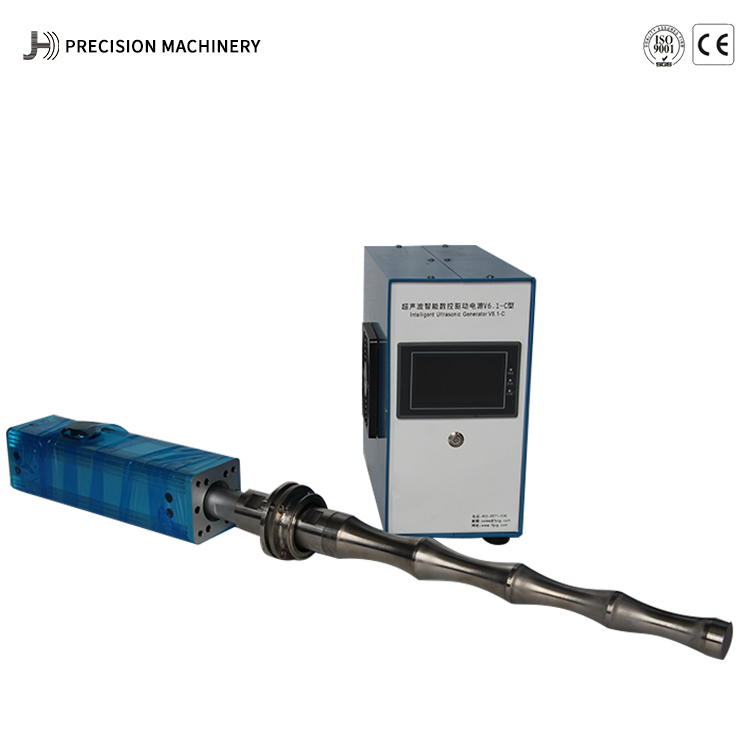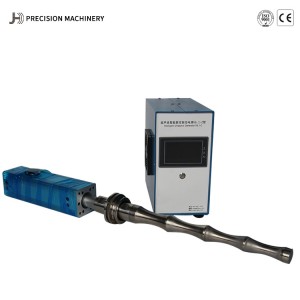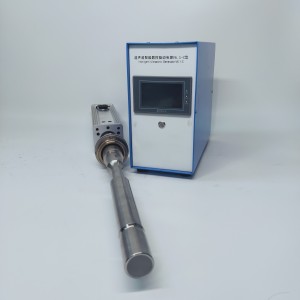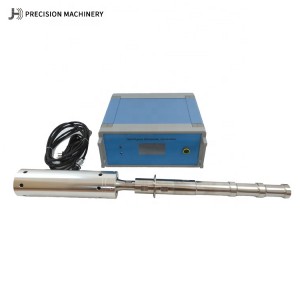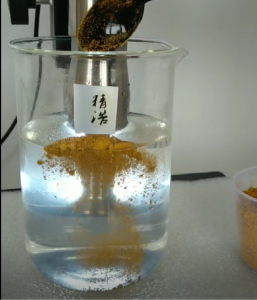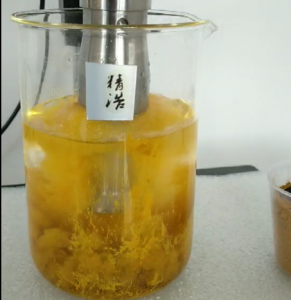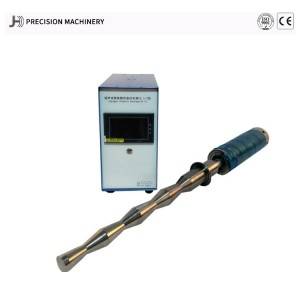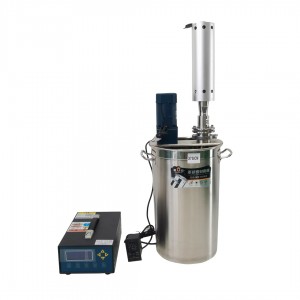Ultrasonic sonochemistry machine for liquid treatment
ltrasonic sonochemistry is the application of ultrasound to chemical reactions and processes. The mechanism causing sonochemical effects in liquids is the phenomenon of acoustic cavitation.
Acoustic cavitation can be used for various applications such as dispersion, extraction, emulsification, and homogenization. In terms of throughput, we have different equipment to meet the throughput of various specifications: from 100ml to hundreds of tons of industrial production lines per batch.
SPECIFICATIONS:
| MODEL | JH1500W-20 | JH2000W-20 | JH3000W-20 |
| Frequency | 20Khz | 20Khz | 20Khz |
| Power | 1.5Kw | 2.0Kw | 3.0Kw |
| Input voltage | 110/220V, 50/60Hz | ||
| Amplitude | 30~60μm | 35~70μm | 30~100μm |
| Amplitude adjustable | 50~100% | 30~100% | |
| Connection | Snap flange or customized | ||
| Cooling | Cooling fan | ||
| Operation Method | Button operation | Touch screen operation | |
| Horn material | Titanium alloy | ||
| Temperature | ≤100℃ | ||
| Pressure | ≤0.6MPa | ||
The role of ultrasound in chemical reactions:
increase in reaction speed
increase in reaction output
more efficient energy usage sonochemical methods for switching of reaction pathway
performance improvement of phase transfer catalysts
avoidance of phase transfer catalysts
use of crude or technical reagents
activation of metals and solids
increase in the reactivity of reagents or catalysts

